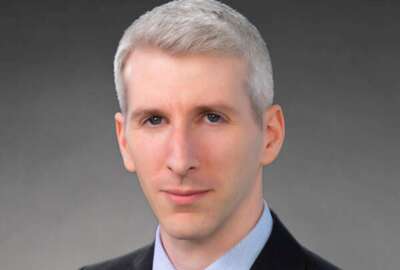Sponsored by Icertis
State Dept transforming procurement with category management, streamlined processes
State wants teams of procurement specialists who not only know the contracting process, but also have deep insights into their respective markets.
The State Department is embarking on a transformation in how it performs acquisition. It’s moving to a category management approach, organizing procurement around the primary categories of spend. In addition, it’s launching a lifecycle management approach to help streamline and standardize procurement workflows.
“For the most part, most agencies are trying to buy smarter these days and use best in class vehicles that are established out there. We’re certainly doing that,” Mike Derrios, deputy assistant secretary for acquisition and senior procurement executive at the State Department, said on Federal Monthly Insights — Contract Management Modernization. “But the missing ingredient for us really, and for any agency, is aggregating the demand signal. So how can you look internally at the requirements and identify those opportunities before you go to the best in class vehicles? That’s really where we get the best bang for the buck, so to speak.”
That’s why State is reorganizing to have teams focused on specific areas of procurement, such as IT, including cybersecurity and artificial intelligence, for example. The idea is that procurement specialists in those areas will more deeply understand their respective markets, such as how fast and the ways in which technology changes.
The idea is to use that knowledge of the market to supplement the larger buying power of category management. State wants to interact with industry in a smarter way, to get better responses to requests for proposals and take more things — like interdependencies and technology refreshes — into account at the start of the process.
Acquisition strategy on the frontend
Derrios said that’s part of a larger strategy of focusing on the frontend of the acquisition process. Toward that end, State is also launching what it calls “procurement planning conferences” in the third quarter of the year, to engage with customers and find out what the upcoming year’s portfolio will look like.
“We’re trying to get ahead of some of the constraints that are just inherently in the procurement function across the enterprise. Budget cycles seem to be truncated these days, for example, have been for a while,” Derrios told the Federal Drive with Tom Temin. “How can we get in front of that by talking to our customers about what they think they might do with their money next year, should they get it that way? We’re at least planning together for the major things that are going to require significant effort as well as those that may not be as strenuous for us.”
State is using data analytics to get a better idea of what that looks like. Derrios said it’s trying to build more dashboard capabilities to provide a better look at the current portfolios, rather than relying on agencies to dig into their own systems and the Federal Procurement Data System just to get a retroactive view. State wants a more concurrent picture, as close to real-time as possible.
Streamlining the process
At the same time, the last thing State wants to do is give contracting specialists one more database or tool to incorporate into their workflow; Derrios said they have too many already.
“I would like for us to have an end to end system where, frankly, it would be fantastic if we had a system that allowed our customers to be able to work workflow documents into a shared workspace where our [contracting officers (COs)] and our customers could actually work on documents together,” he said. “I’ll go so far as to say a secure system where industry could submit their proposals in to us. I say that with emphasis on ‘secure’ system. I would love that.”
Right now, that process is largely handled via email, he said, which is getting unwieldy. Even the documents are in some cases simply too large for companies to submit through that channel. Unfortunately, Derrios said, that kind of system is not something State is even close to having.
Humans in the loop
While many agencies are turning to technology to streamline workflows and gain efficiencies, Derrios said State is paying particular attention to the limits of such technologies just as much as the possibilities. That’s why he’s partnering with the head of contracting at State headquarters to implement a contract and legal review board.
“Especially on our larger contracts, we’re going to be putting eyes on those and taking a look at things … are the terms and conditions the right ones?” he said. “For us, it’s really about striking that balance. How can we leverage technology to the maximum extent and automate as much of it as possible? But let’s also get back to the old fashioned way. It’s okay to put some human eyes on things.”
Copyright © 2025 Federal News Network. All rights reserved. This website is not intended for users located within the European Economic Area.
Daisy Thornton is Federal News Network’s digital managing editor. In addition to her editing responsibilities, she covers federal management, workforce and technology issues. She is also the commentary editor; email her your letters to the editor and pitches for contributed bylines.
Follow @dthorntonWFED






